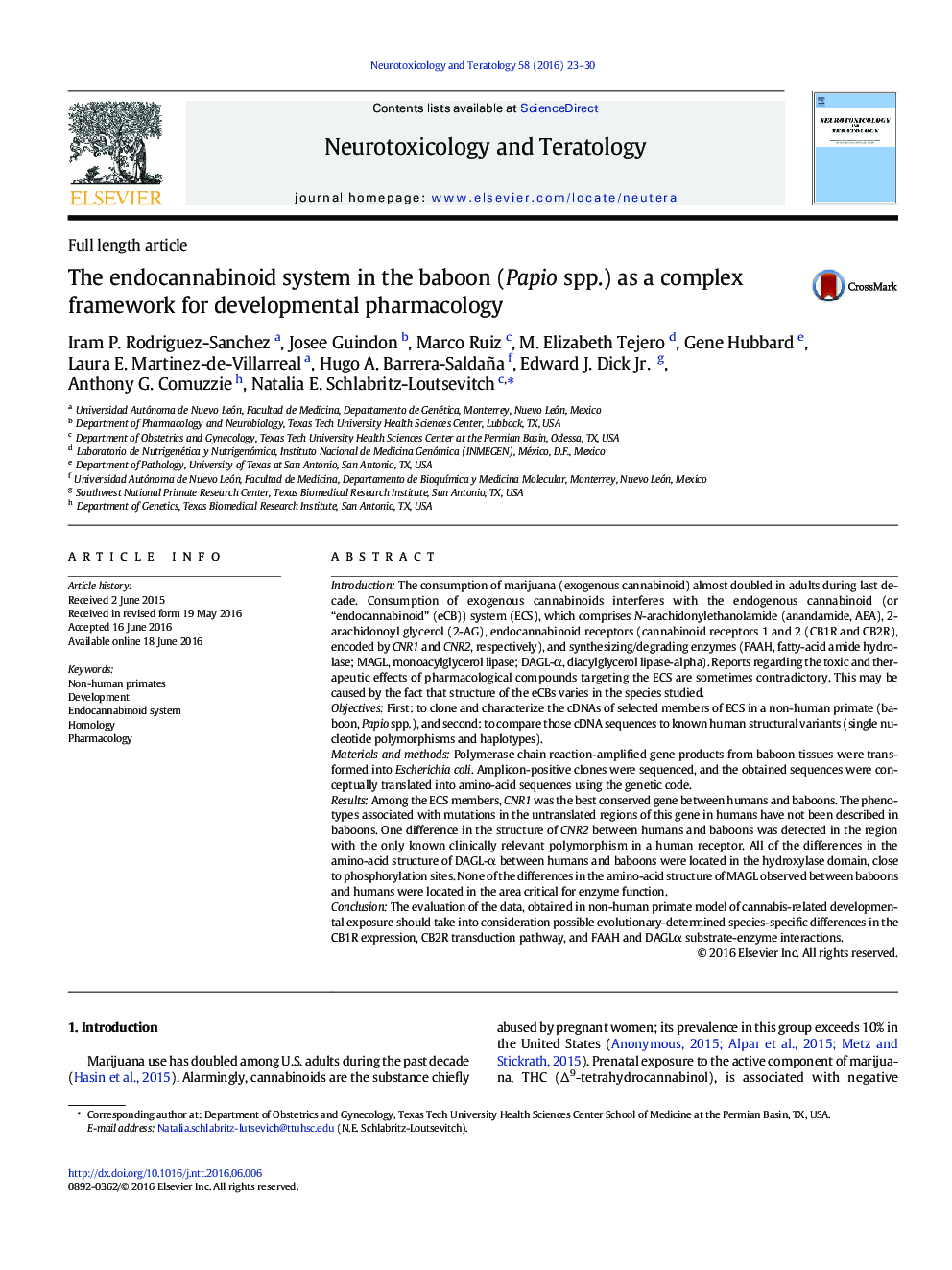| کد مقاله | کد نشریه | سال انتشار | مقاله انگلیسی | نسخه تمام متن |
|---|---|---|---|---|
| 5561052 | 1562078 | 2016 | 8 صفحه PDF | دانلود رایگان |

- The analyses of cDNA sequence of ECS in non-human primates are performed.
- The ECS sequences in baboons are compared to human sequences.
- The CNR1 has 100% and CNR2-96% amino acids homology with human receptors.
IntroductionThe consumption of marijuana (exogenous cannabinoid) almost doubled in adults during last decade. Consumption of exogenous cannabinoids interferes with the endogenous cannabinoid (or “endocannabinoid” (eCB)) system (ECS), which comprises N-arachidonylethanolamide (anandamide, AEA), 2-arachidonoyl glycerol (2-AG), endocannabinoid receptors (cannabinoid receptors 1 and 2 (CB1R and CB2R), encoded by CNR1 and CNR2, respectively), and synthesizing/degrading enzymes (FAAH, fatty-acid amide hydrolase; MAGL, monoacylglycerol lipase; DAGL-α, diacylglycerol lipase-alpha). Reports regarding the toxic and therapeutic effects of pharmacological compounds targeting the ECS are sometimes contradictory. This may be caused by the fact that structure of the eCBs varies in the species studied.ObjectivesFirst: to clone and characterize the cDNAs of selected members of ECS in a non-human primate (baboon, Papio spp.), and second: to compare those cDNA sequences to known human structural variants (single nucleotide polymorphisms and haplotypes).Materials and methodsPolymerase chain reaction-amplified gene products from baboon tissues were transformed into Escherichia coli. Amplicon-positive clones were sequenced, and the obtained sequences were conceptually translated into amino-acid sequences using the genetic code.ResultsAmong the ECS members, CNR1 was the best conserved gene between humans and baboons. The phenotypes associated with mutations in the untranslated regions of this gene in humans have not been described in baboons. One difference in the structure of CNR2 between humans and baboons was detected in the region with the only known clinically relevant polymorphism in a human receptor. All of the differences in the amino-acid structure of DAGL-α between humans and baboons were located in the hydroxylase domain, close to phosphorylation sites. None of the differences in the amino-acid structure of MAGL observed between baboons and humans were located in the area critical for enzyme function.ConclusionThe evaluation of the data, obtained in non-human primate model of cannabis-related developmental exposure should take into consideration possible evolutionary-determined species-specific differences in the CB1R expression, CB2R transduction pathway, and FAAH and DAGLα substrate-enzyme interactions.
Journal: Neurotoxicology and Teratology - Volume 58, NovemberâDecember 2016, Pages 23-30